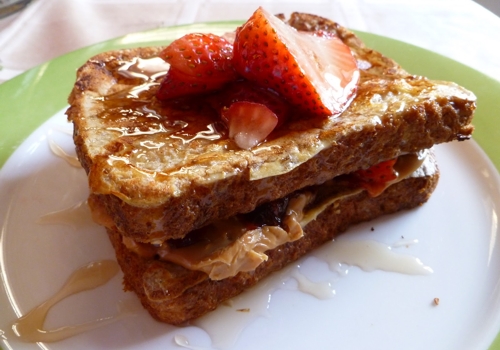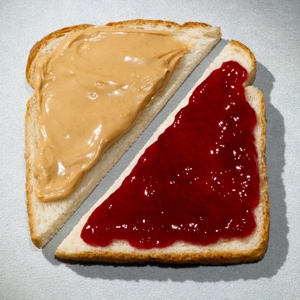I can’t stand it any longer. I just have to know. And, as result, so do you: Why do they sell Jams and Jellies by volume (fluid oz./ml) and other spreads – Honey, Peanut Butter, Nutella, you name it – by weight (oz./gram)? Herewith follows a digest of my recent in-depth research into this vexing issue…
 My all-time fave PB&J breakfast treat: Stuffed French Toast
My all-time fave PB&J breakfast treat: Stuffed French Toast
drizzled with Pure Maple Syrup!
It seems simple, when you first read the Canadian Food Inspection Agency Guidance Document on how to ‘declare the net quantity’ of various foods:
The net quantity must be indicated…
But that doesn’t make sense when you consider that liquid Honey is sold by weight, like a solid. And Peanut and other non-fruit Spreads are sold by weight.
Comes down this…
Somebody – or, more likely, a whole review board – at the Canadian Food Inspection Agency sat down one day and decided what’s a liquid and what’s a solid. Period. Their Guidance Document for food producers and packagers does contain an exhaustive list of which foods belong in which category. But nowhere in the detailed documentation is there an official definition of what’s a fluid and what’s a solid.
I would definitely prefer it if all Breakfast Spreads were sold by volume. I slather them on my Toast, Waffles, Pancakes, Biscuits and other morning goodies by volume. I measure these ingredients for use in recipes by volume. How do I know how many cups of Peanut Butter are in a 2 kg jar? I could write volumes about why selling Spreads other than Jam and Jelly by weight is just wrong.
Eventually, they’ll have to revise their Guidance Document. I want to be on that review board!
~ Maggie J.

